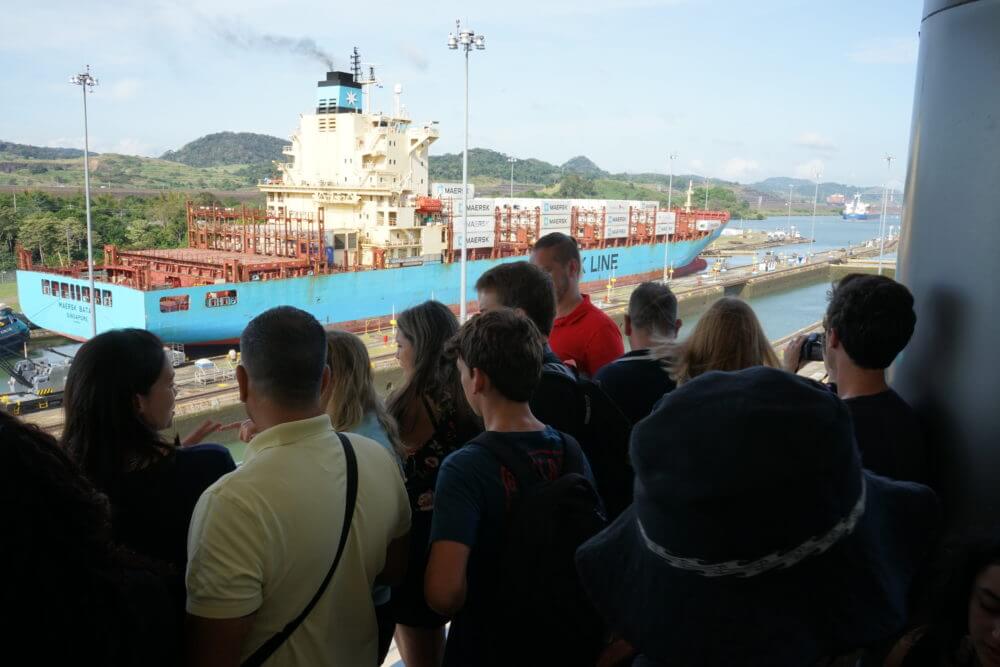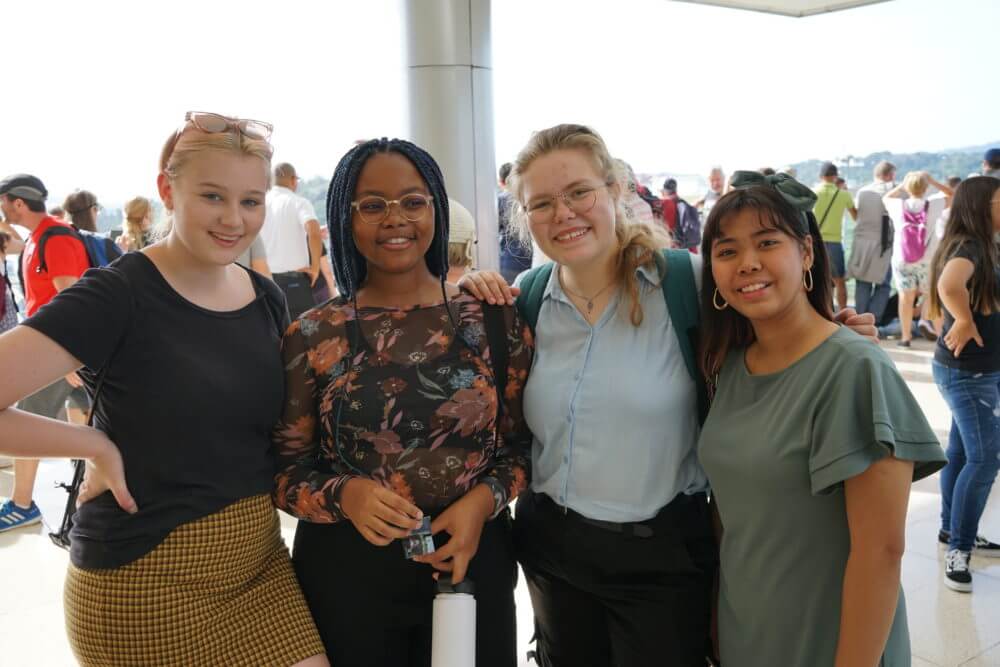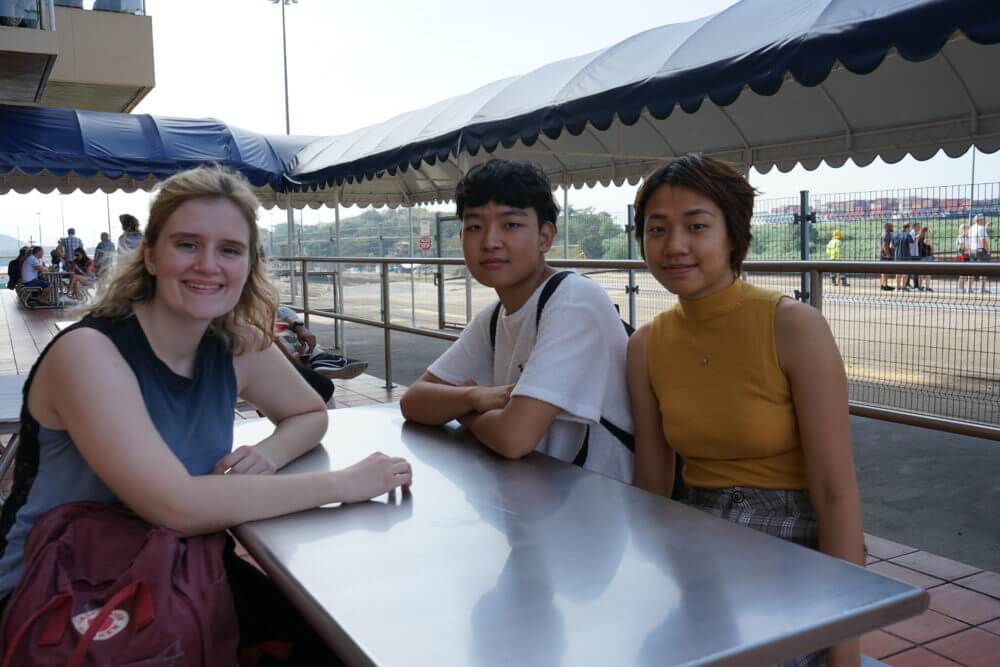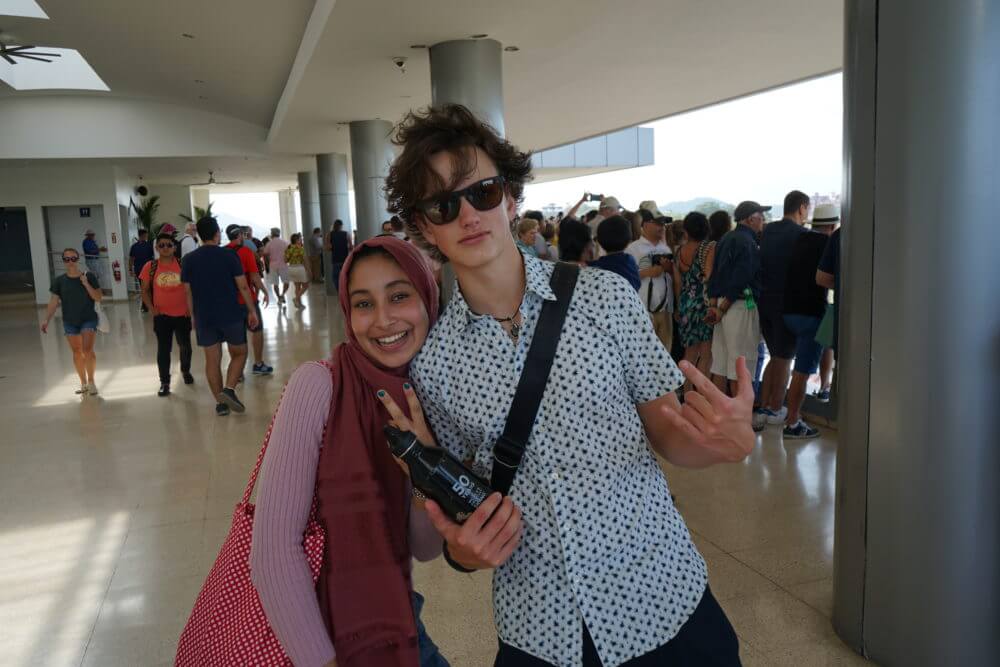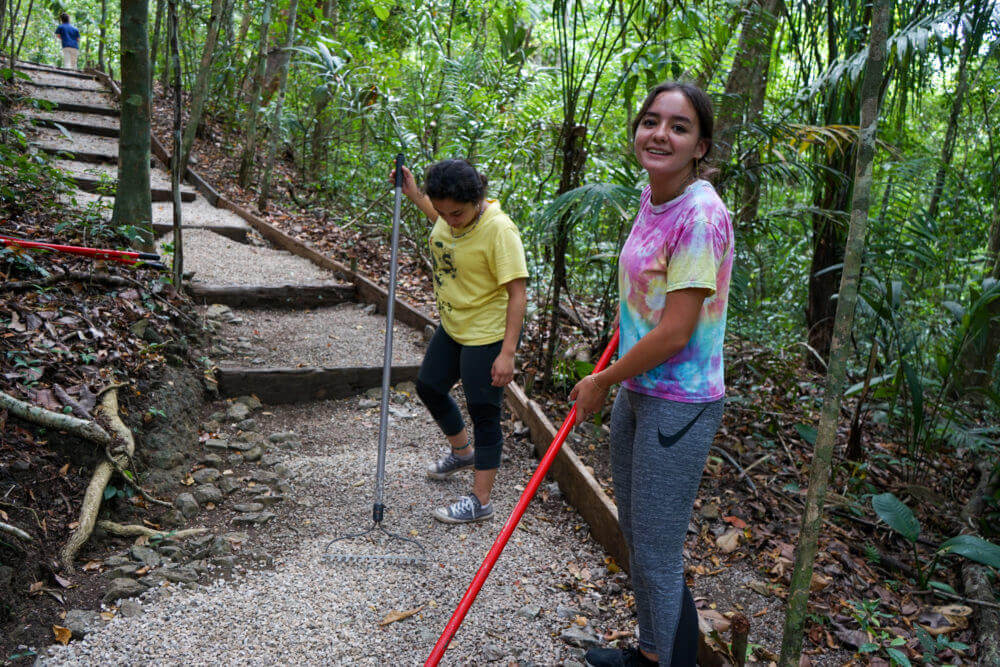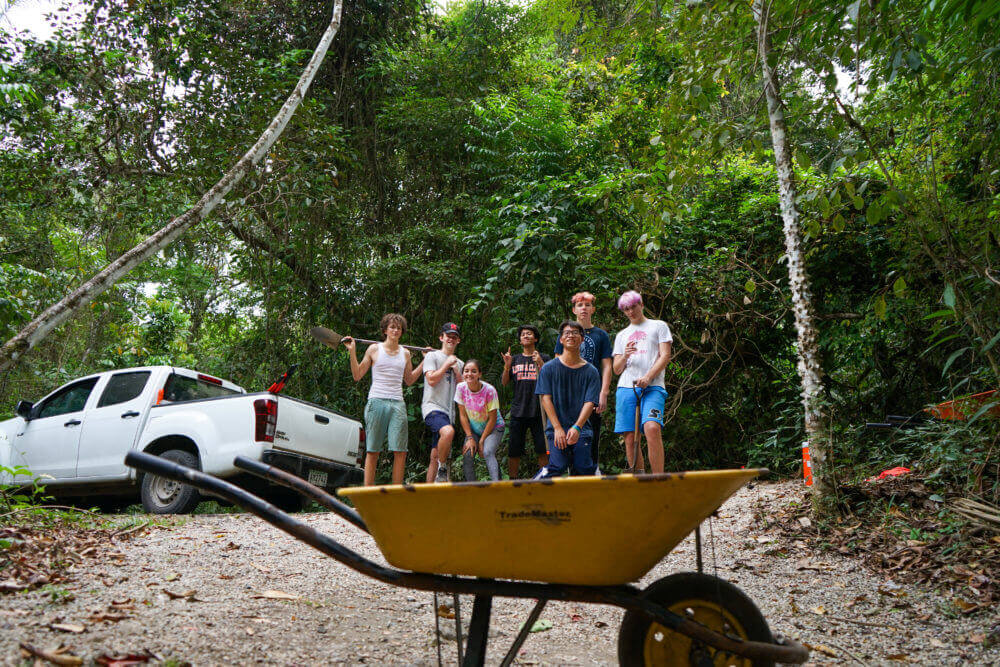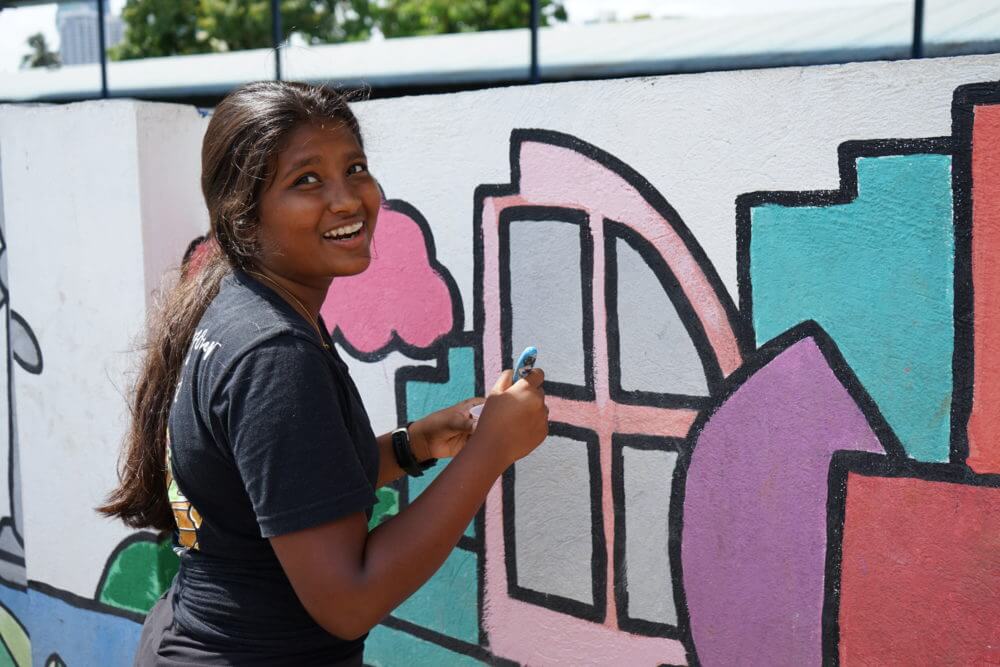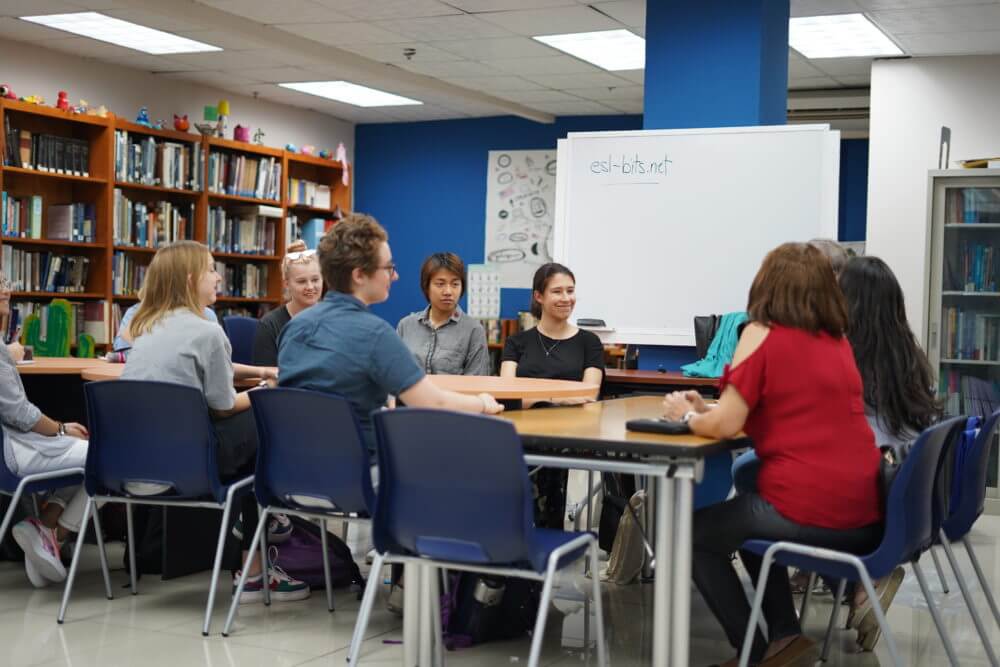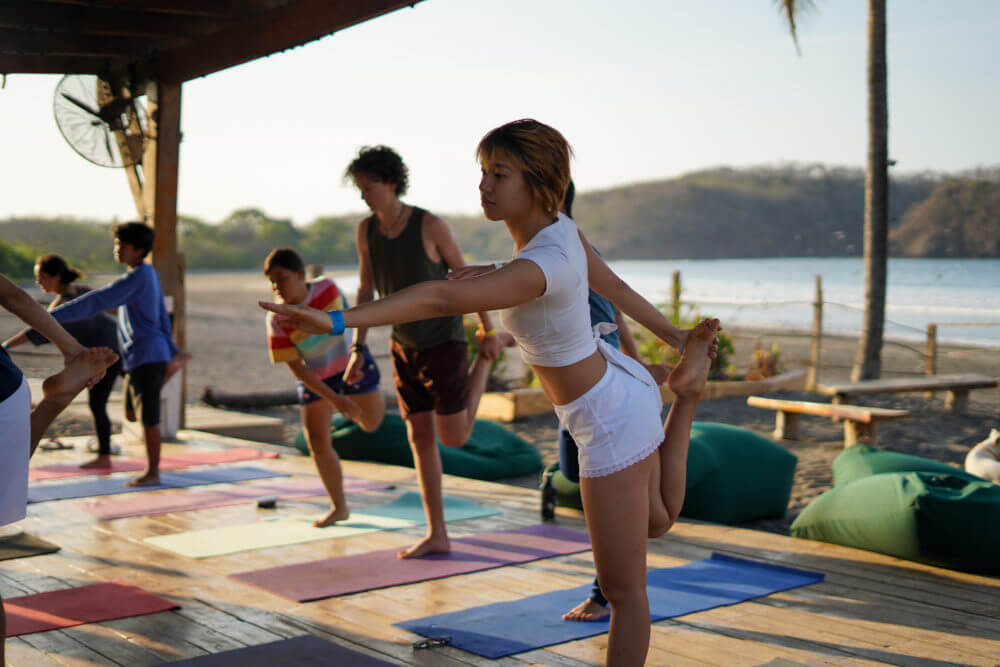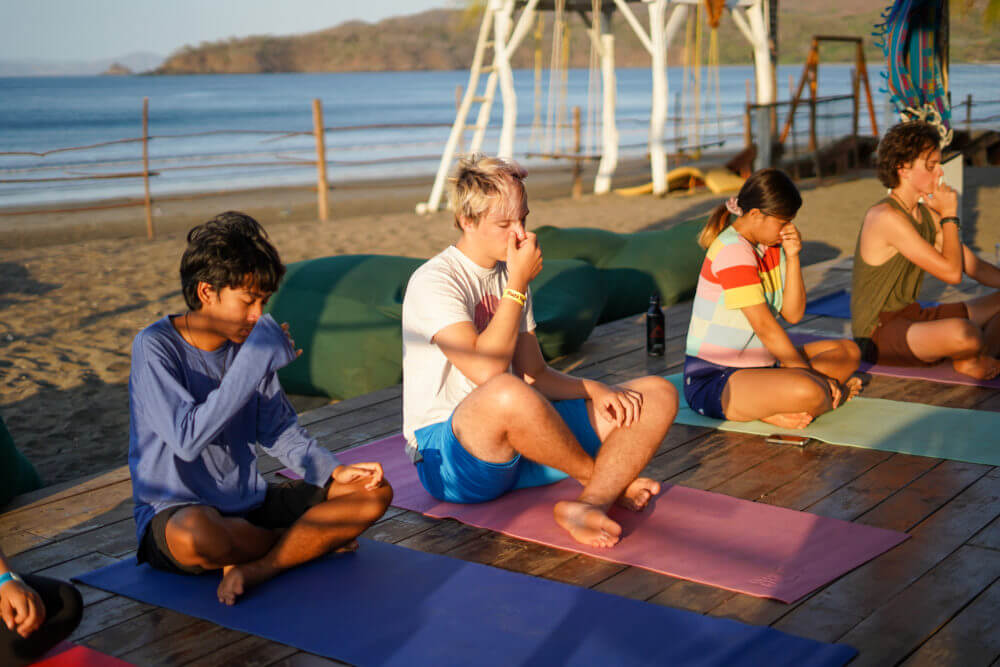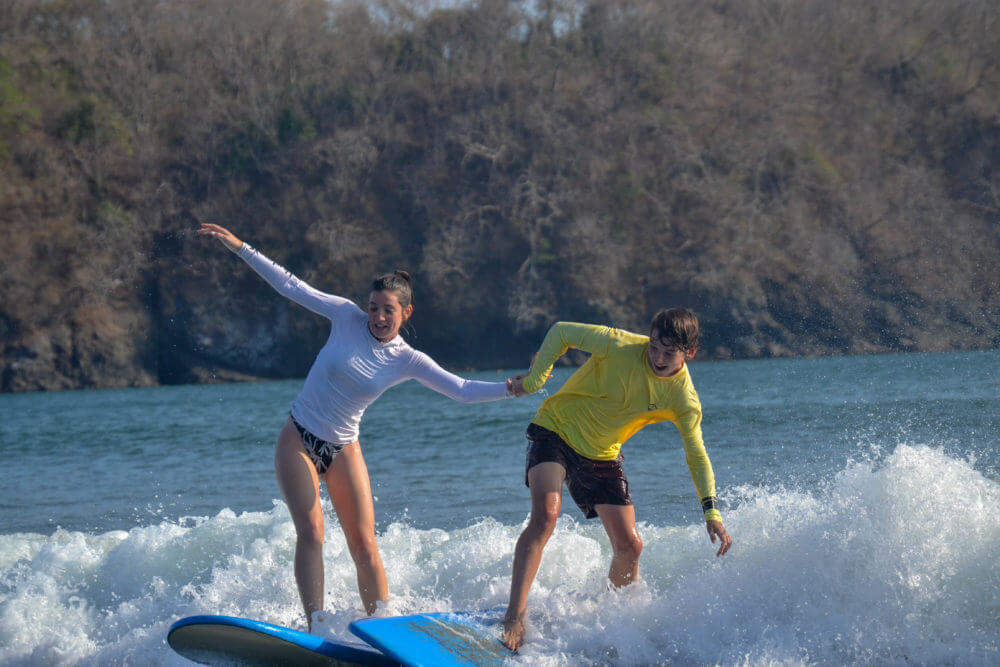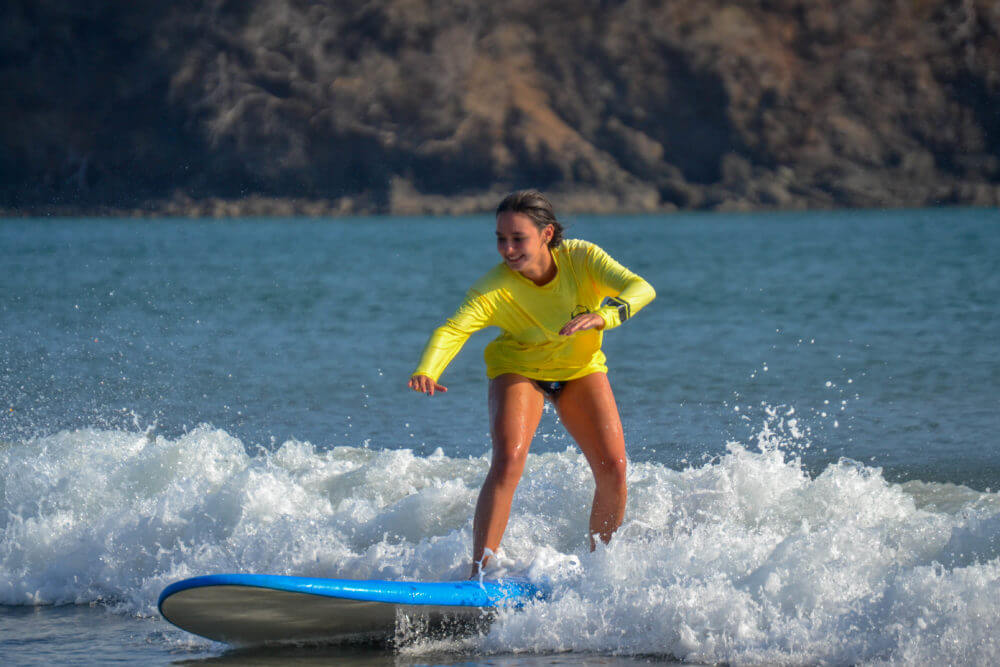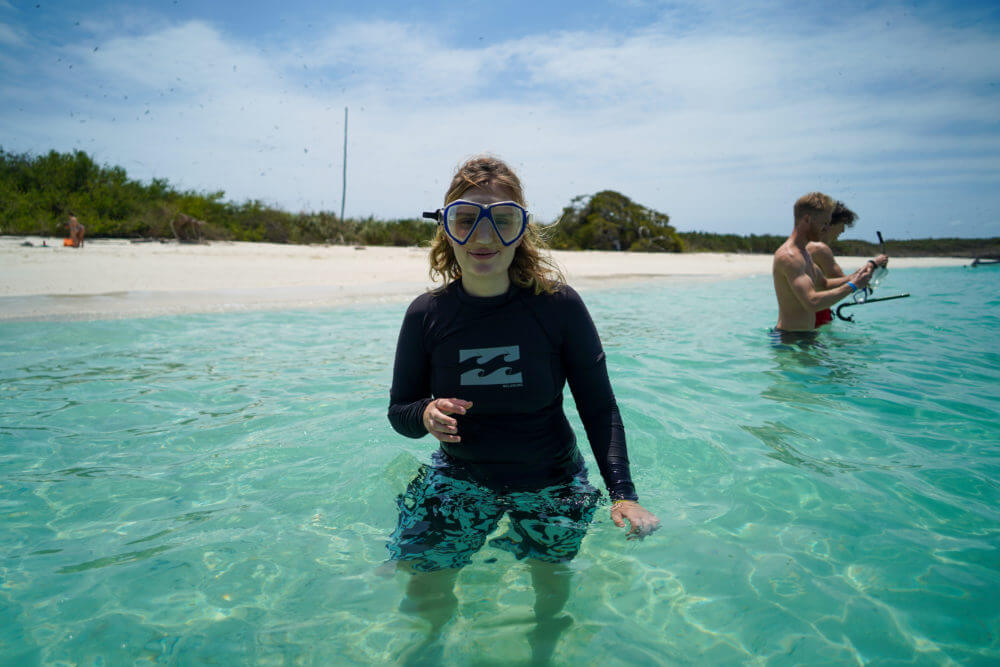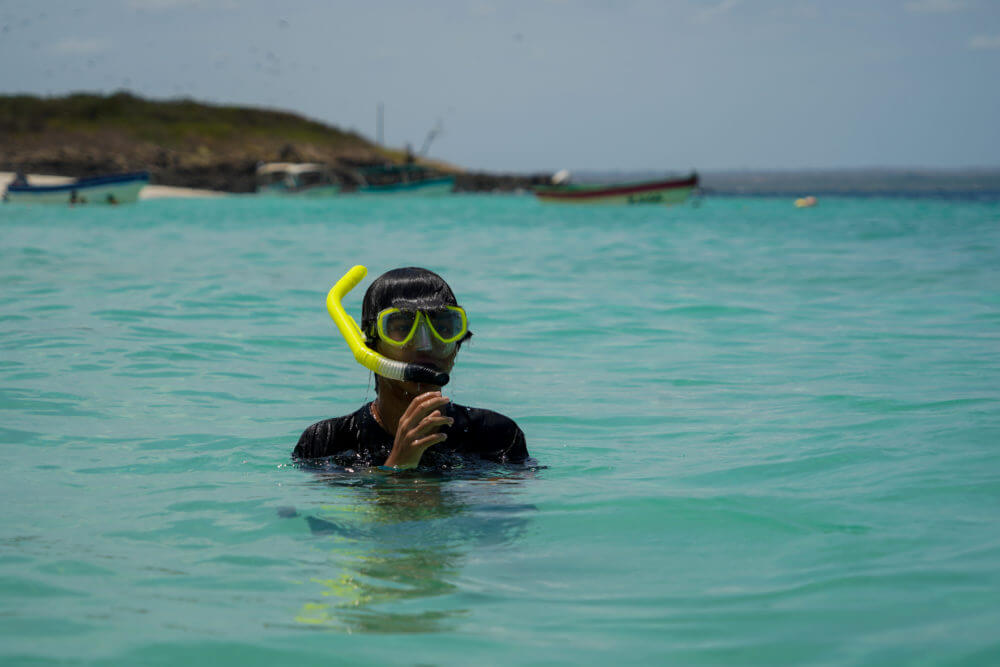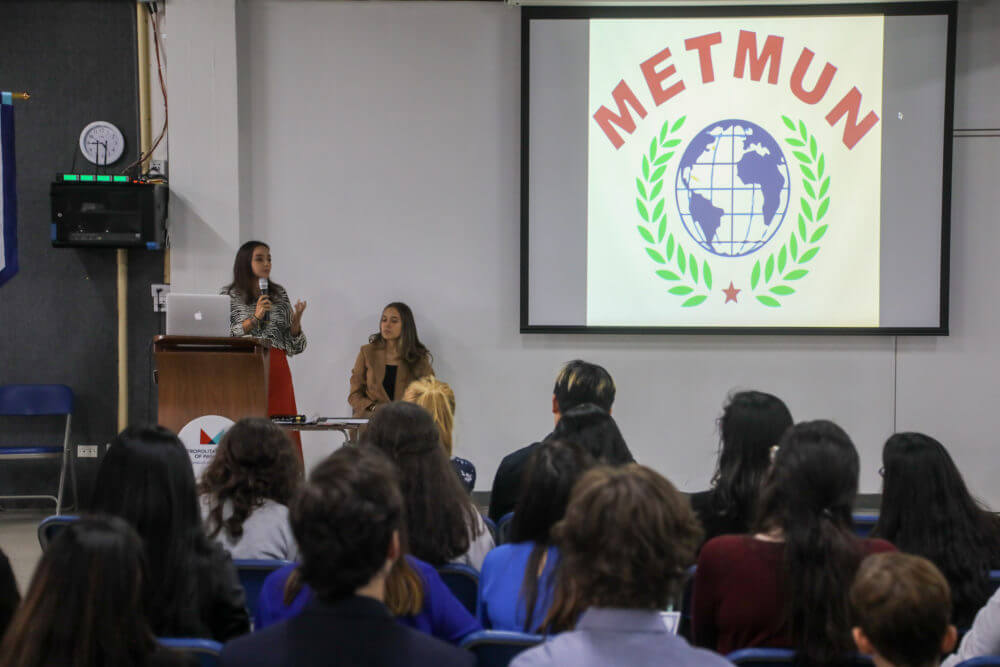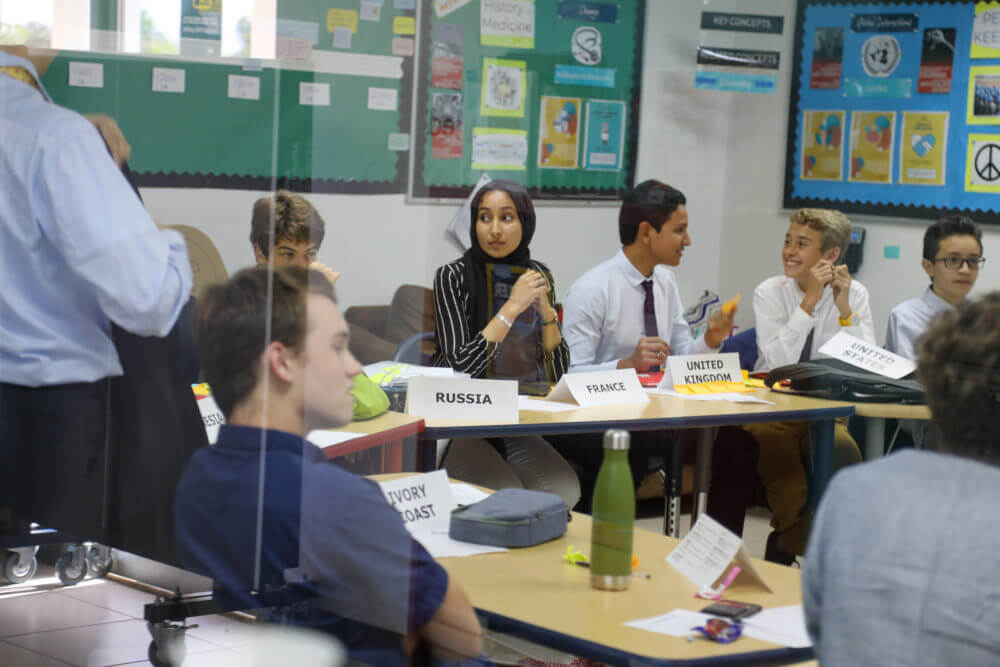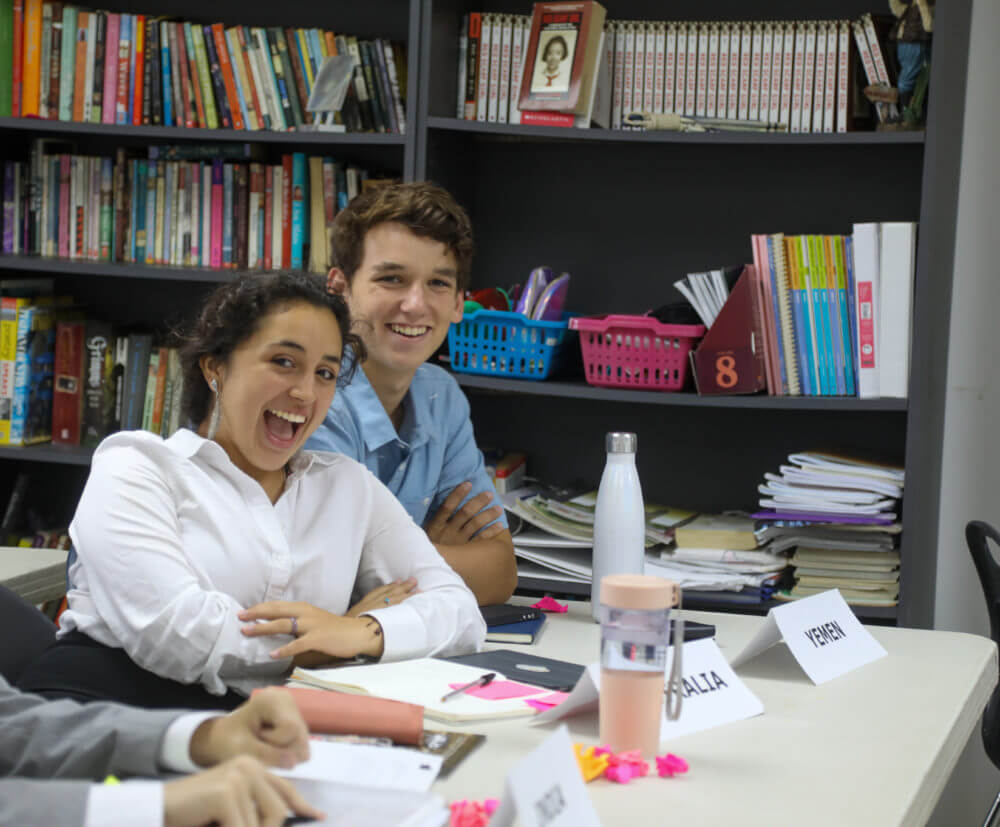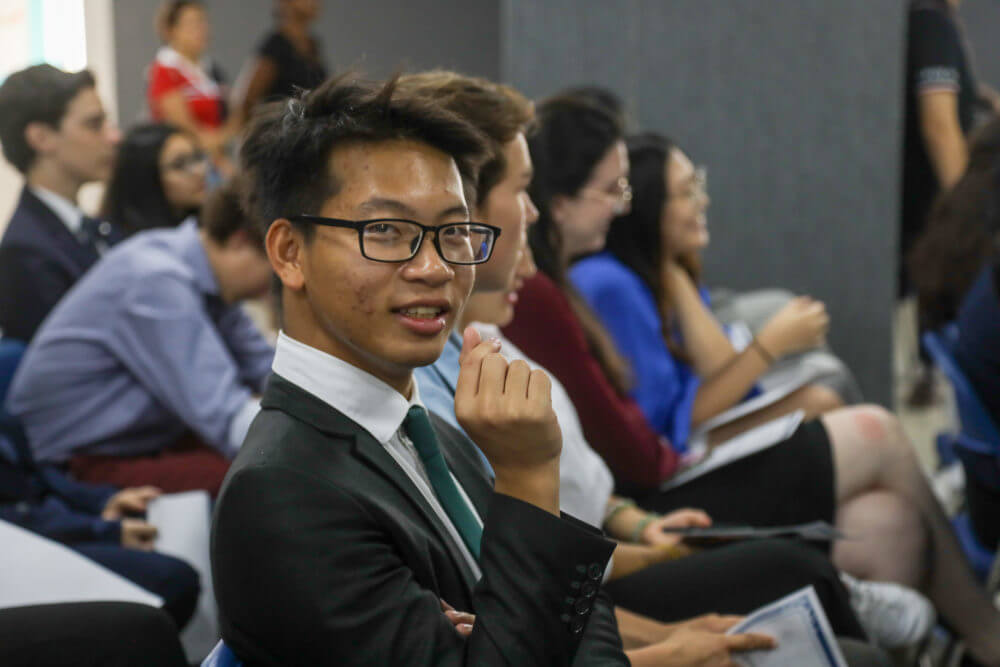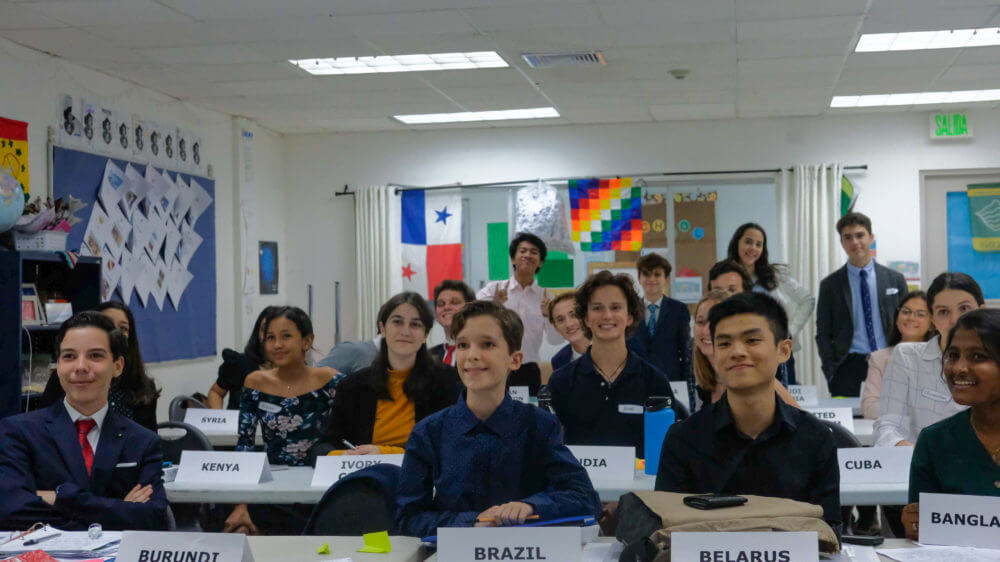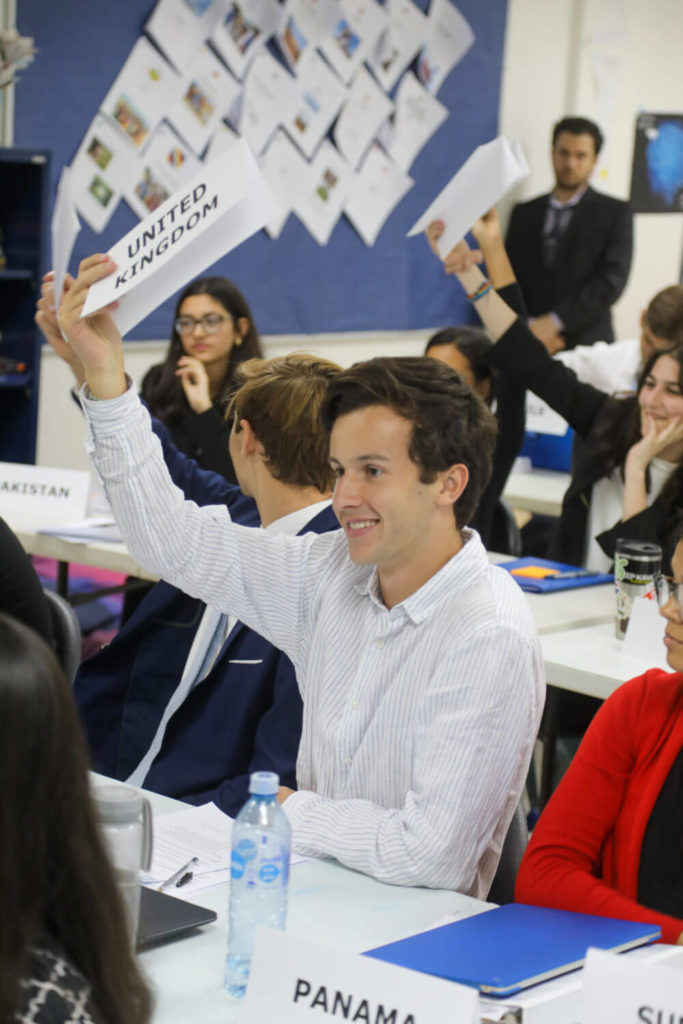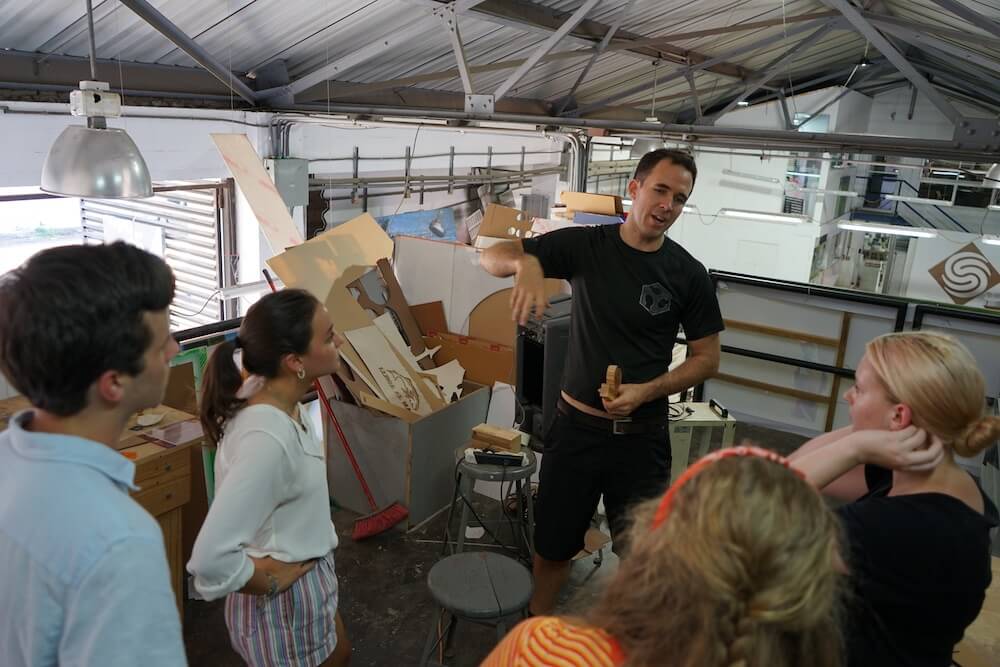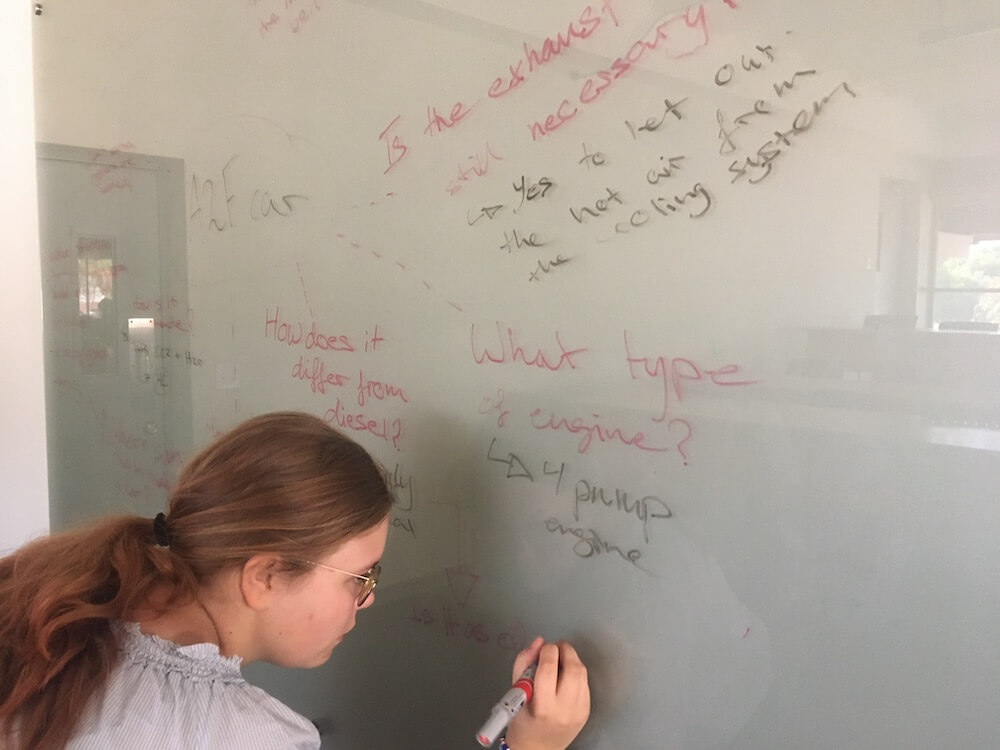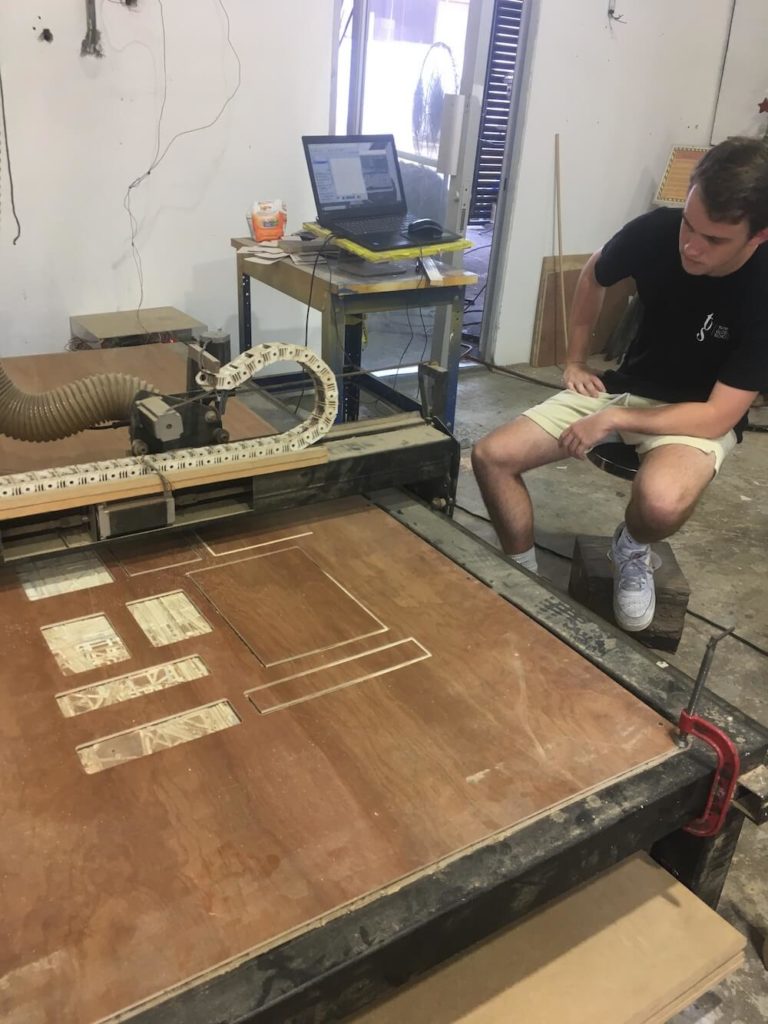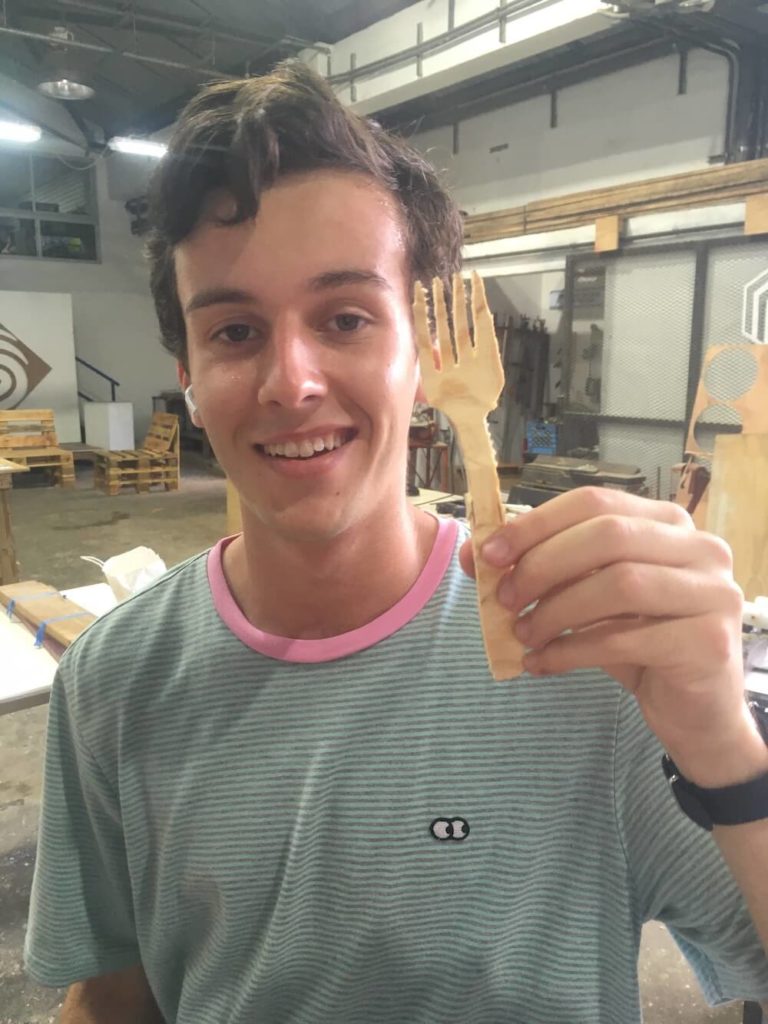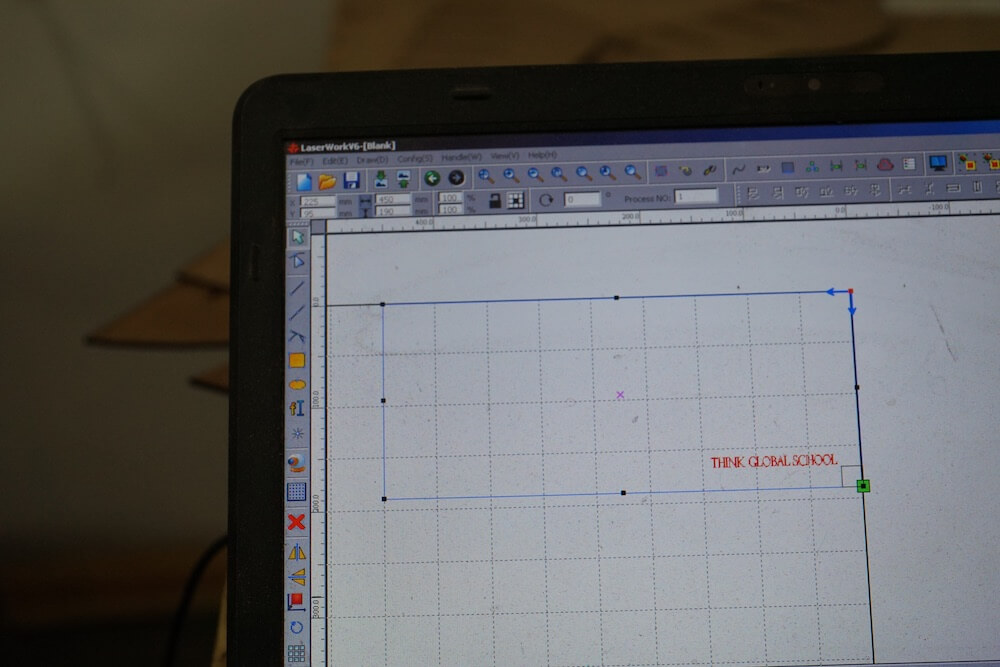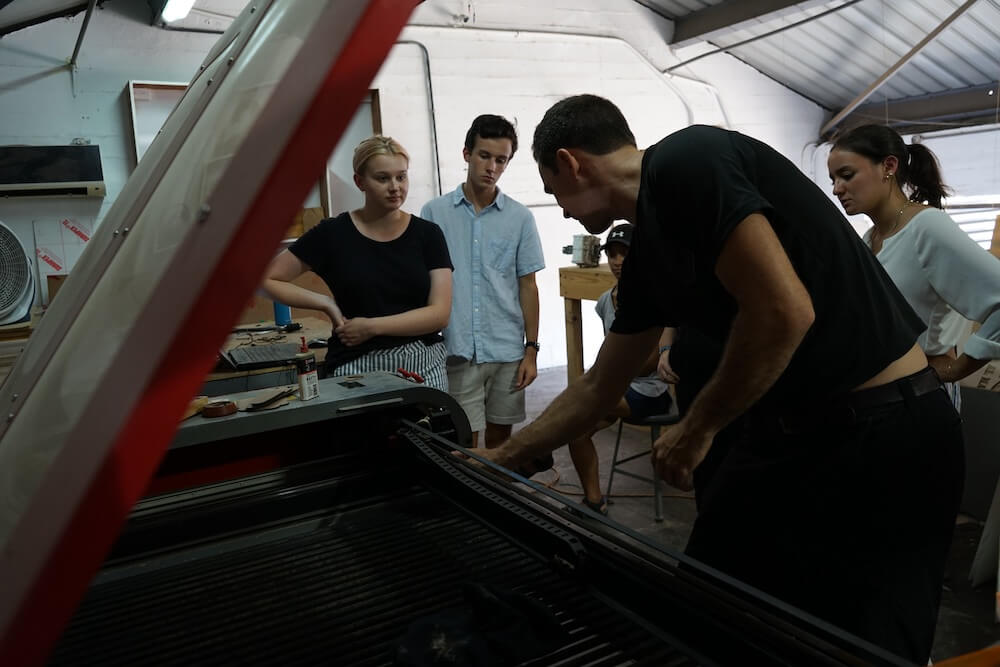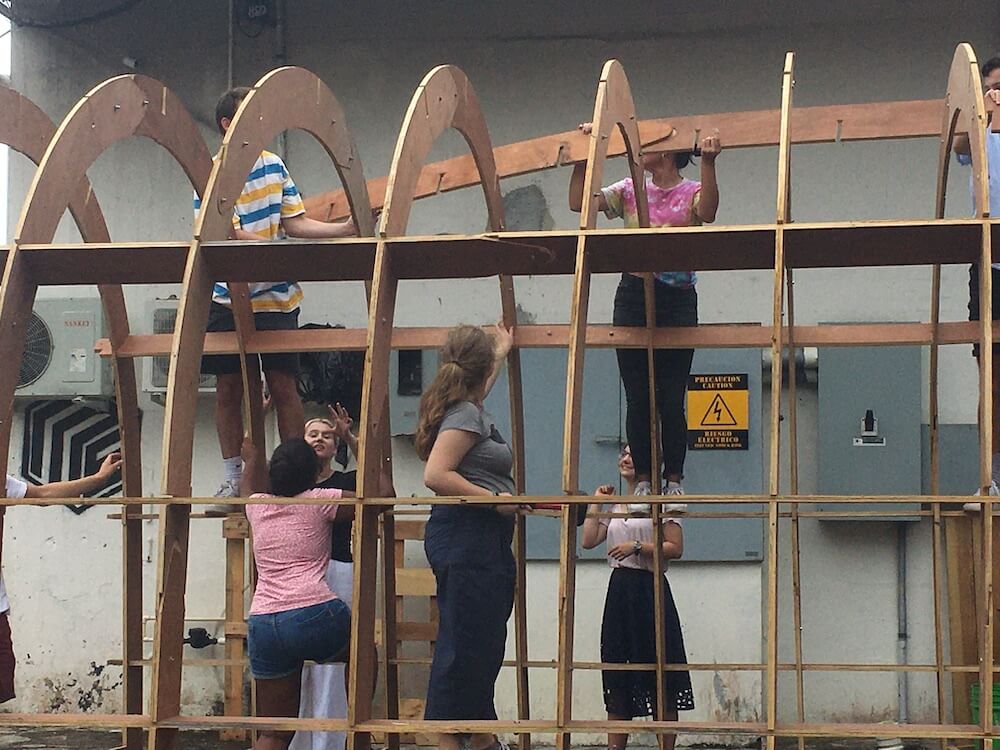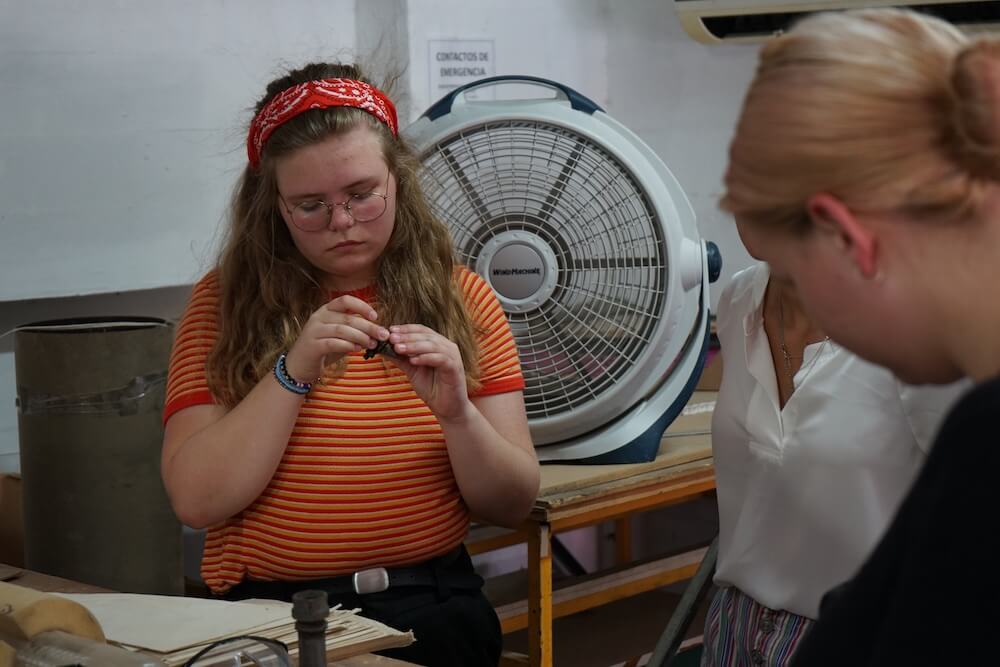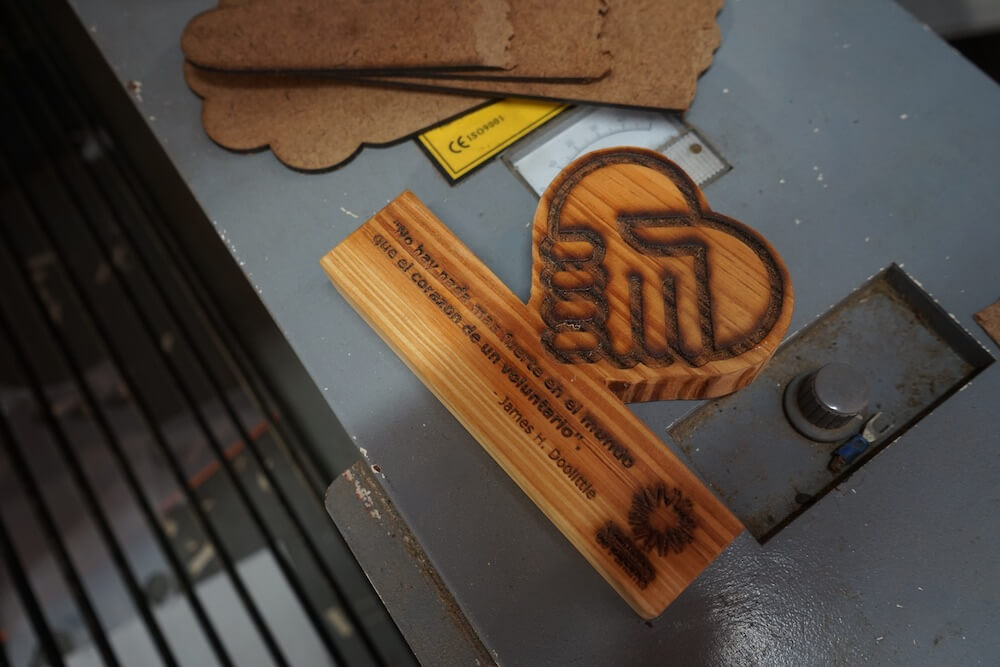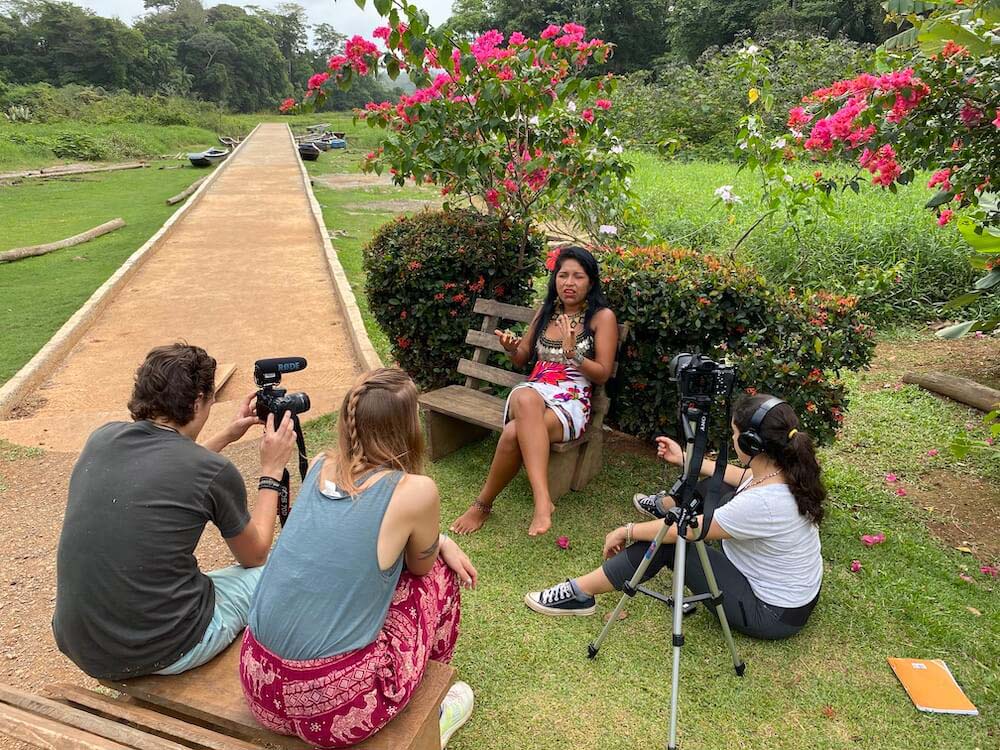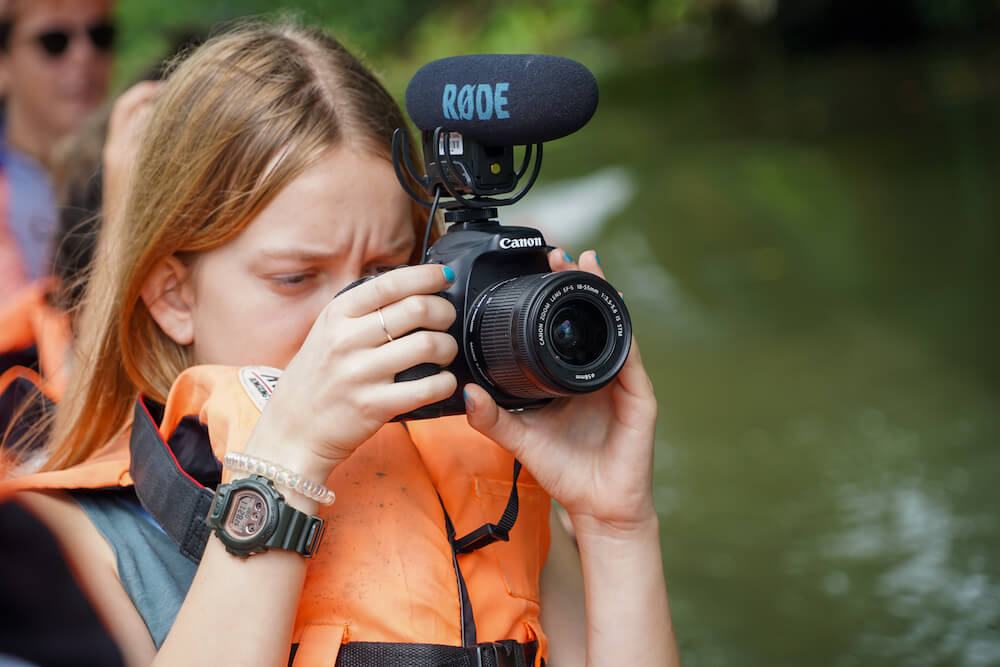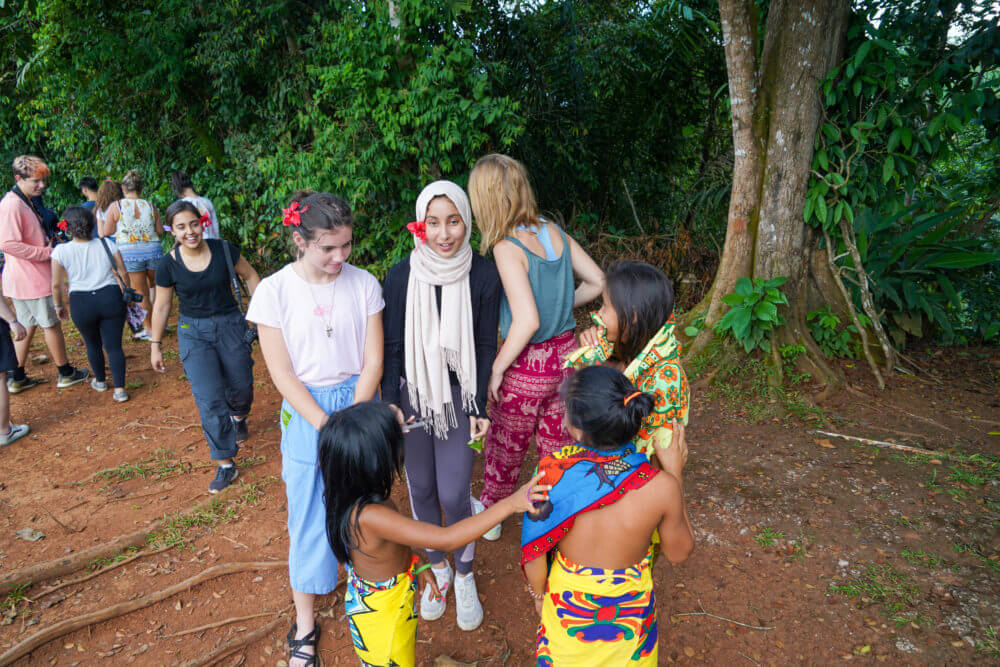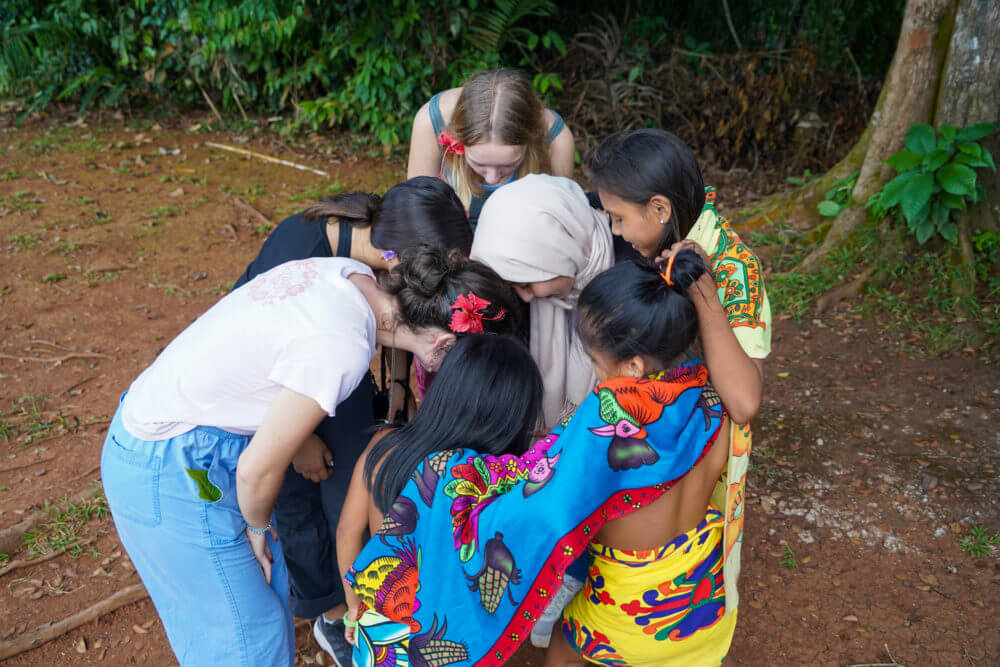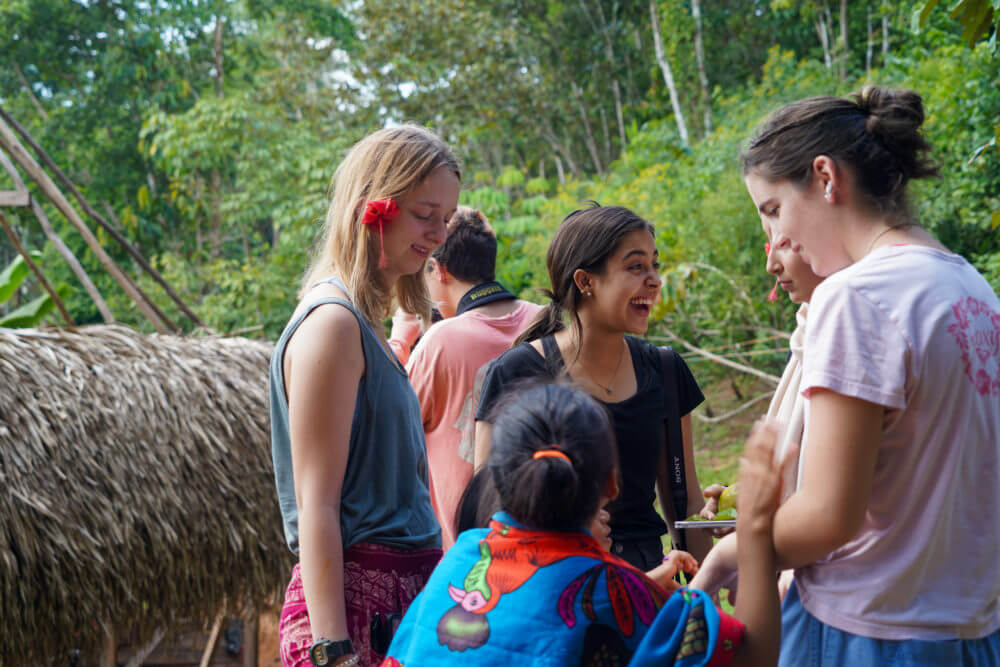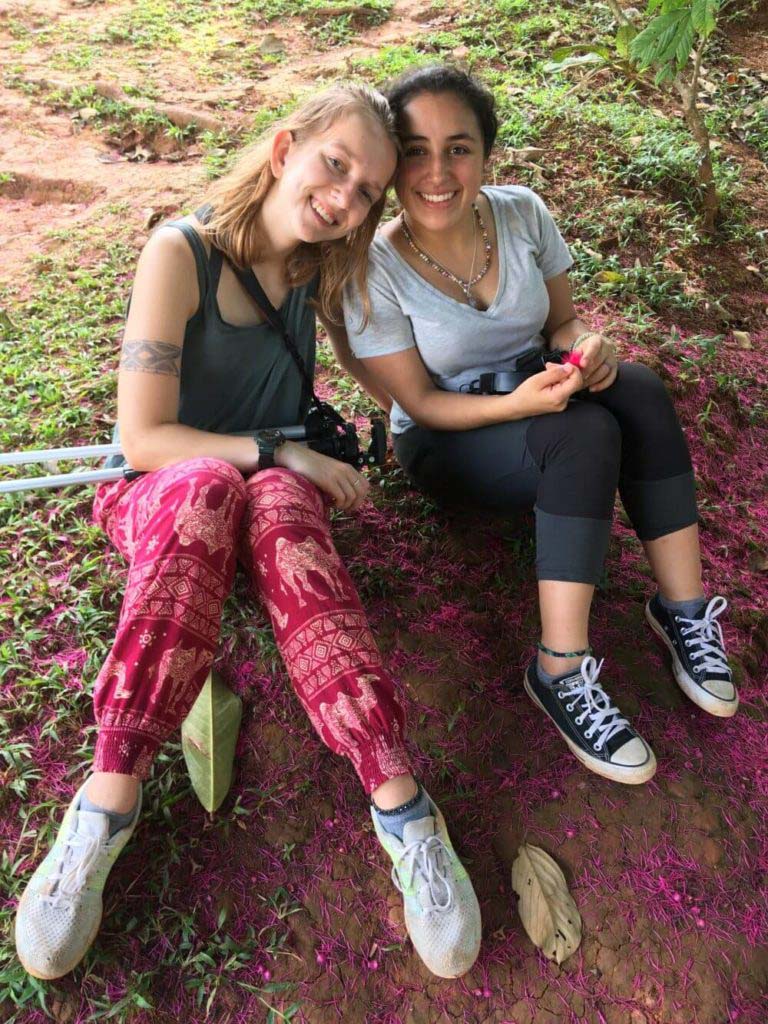Are you interested in applying to THINK Global School but aren’t quite sure if it’s right for you? That’s OK! It’s a decision that shouldn’t be taken lightly. To help you in your application process, we’ve put together a list of five things we feel every applicant to THINK Global School should know. We hope you find them helpful. 1) You’ll gain an education by living and learning in the...
Read MoreRecently our Changemaker Cohort 2 (CM2) students completed their term in Panama, one of Latin America’s most strategically important countries. The visit marked our first term in Panama (we’ve visited its neighbor Costa Rica twice) and given the positive reception it received from students, it certainly shouldn’t be our last.
Long a crossroads for culture and business due to the canal that runs through it, Panama made perfect sense as a host country due to its smorgasbord of African, American Indian, North American, and Spanish influences. While definitely a melting pot due to steady immigration, rich cultural traditions unique to Panama still abound due to an indigenous population that has taken painstaking efforts to maintain their traditions. Seeing colorful and complex pollera dresses during Panama’s many festivals and sampling incredible local fare like carimonolas (fried meat pies) and patacones de plátanos (plantain cakes) helped broaden our students’ cultural horizons in the way only firsthand experiences can.
On the natural side, Panama’s pristine rainforests, mist-topped mountains, and unspoiled coastlines provided an enviable backdrop to engage in place-based learning. Due to the pleasant surroundings, many of our student-bonding activities this term took place on Panama’s sandy beaches and in its crystal waters.
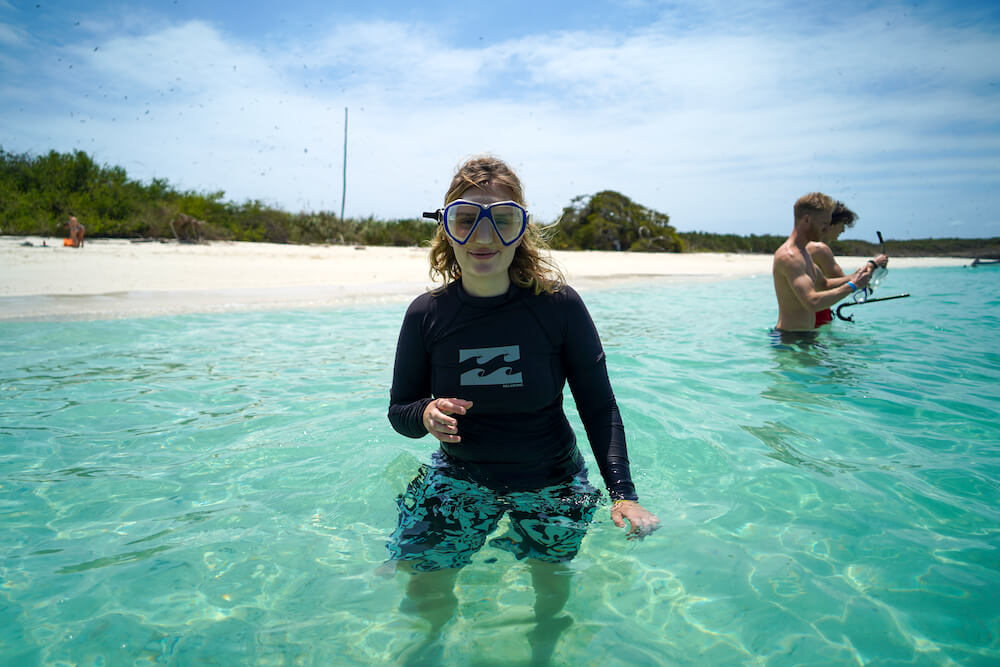
For their home base, students spent the term living in dormitories just outside of Panama City in the Ciudad del Saber (City of Knowledge). Consisting of 200+ buildings and over 5,000 residents, the Ciudad del Saber is an independently-run hub of innovation constructed on the former Fort Clayton military base. Ciudad del Saber is now home to myriad innovators, researchers, students, and educators, many of whom attend and work at the international universities who maintain campuses there. Like our students, everyone who resides in the Ciudad del Saber aspire to achieve human and sustainable development through the pursuit of knowledge.
This spirit of creativity paired nicely with the City of Knowledge’s technological resources to facilitate one of our most ambitious teacher-led modules yet: CreaTech, which focused on innovative product design through the use of digital fabrication tools. Our second module choice centered on the concept of Blockchain while the third module, The Matrix, took a more anthropological approach, encouraging students to explore and document Panama’s hidden treasures.
You can jump straight to an exploration of this term’s learning themes by clicking here.
Visiting the Panama Canal
As part of their orientation to Panama, CM2 students and staff visited the Panama Canal. The visit was an easy one, as the Miraflores Locks are located mere minutes from the City of Knowledge.
Construction of the Panama Canal began by France in 1881, but due to the overwhelming scale of the project and subsequent high mortality rate, the project was taken over by the United States in 1904 and completed in 1914. The Canal was owned outright by the United States until 1977, when it began being jointly managed by the US and Panama. In 1999, Panama was granted full autonomy over the lucrative shipping passage.
An engineering marvel, the canal reduced travel time for commercial and passenger ships from three weeks (if they had to circle around South America) to under 12 hours. The canal has had an enormous influence on Panama City’s economy and cultural diversity, though its construction did levy just as enormous a toll on the environment and indigenous communities.
Salsa Lessons
CM2 knows how to salsa! One of our orientation activities was a sunset salsa class in Casco Viejo (Old Town) with their instructor Martha and her team. After only two hours of training, our staff and students had a dance-off for awards in choreography, creativity, and more.
Service Learning
With the introduction of the Changemaker Curriculum, service learning began to play more of a critical role at THINK Global School. Now, in each of our service learning projects students are encouraged to use their academic knowledge and skills to address genuine community needs. Additionally, prior to their graduation students are required to design and complete a service learning project that addresses a local need in their home country.
Here’s an overview of the organizations our students had the privilege of partnering with and aiding during their time in Panama:
Vital Voices
Seven of our students elected to help a local Panamanian non-profit, Vital Voices, which focuses on empowering women by promoting equality, health, and education. The seven participants were able to apply the e-commerce and marketing skills they have obtained through prior modules and personal projects to aid Vital Voices-aligned microentrepreneurs with their marketing, business, and social media initiatives. They did so by holding weekly workshops and feedback sessions.
Fundacion Sembarte
Ten CM2 students chose to work with Fundación Sembrarte, which focuses on bringing art to marginalized communities through public installations, as part of their service learning program. Students participated in several small projects from painting murals to planting gardens, all part of the foundation’s efforts to beautify the fishing neighborhood of Boca la Caja, one of the last areas along Panama City’s waterfront that is resisting gentrification. By working with local residents, Sembrarte and participating students raised the community’s spirits about Boca la Caja’s value, hopefully thereby reducing gang activity.
Avifauna
Other CM2 students elected to work with the Rainforest Discovery Center, an ecotourism and environmental project and nature site nestled inside of Soberanía National Park. The Rainforest Discovery Center is popular with birdwatchers from across the world, and features a 34 meter/104 foot observation tower that provides incredible opportunities to spot toucans, trogons, hawks, and tanagers from overhead. Participating students helped by rebuilding paths through the jungle, in turn aiding in attracting tourists to the center by providing safer, more accessible walkways.
Through more than ten hours of hard (and very sweaty) work and employing our core value of grit, students discovered what it means to have a vision and make it happen.
weXplore
Rather than go on their weXplore in the middle of term, CM2 waited until after modules and most personal projects had wrapped up. For their weXplore, all staff and students took a trip to Playa Venao — six hours outside of Panama City. It was a much-welcomed opportunity for everyone to put their tech away and live in the moment. Surfing and yoga were major highlights, as were the iguanas at the Isla Iguana Wilderness Refuge.
Model UN
This term, several CM2 students joined students from local PK-12 schools Balboa Academy and the Metropolitan School of Panama to participate in METMUN, the Metropolitan School’s first Model United Nations conference. Over the course of two days, nearly 100 students from all three schools worked on resolutions related to children’s rights by joining one of three committees: Security Council, United Nations Environmental Programme, and the United Nations High Commissioner for Refugees. The event was a huge success in bolstering our students’ research and debate skills and a great opportunity to establish new friendships.
A Look at Our Project-Based Learning
Education at TGS takes place through the Changemaker Curriculum, which leverages the countries we immerse ourselves in through place-based and project-based learning. Each term students select from one of three teacher-led modules (TLM) to participate in during their eight weeks in-country. These teacher-led modules are designed by our educators and ask students to explore and answer a driving question by term’s end. While all of our TLMs are unique, they share the commonality of being pertinent to our host country by typically addressing a cultural, social, political, or environmental topic through the driving question.
Besides participating in teacher-led modules, students also design and develop personal projects. Personal projects provide our students with the agency and autonomy to explore their passions or dive into a topic that has piqued their interest. While all aspects of personal projects are student-led, our educators do act as project mentors to ensure project quality and that the project is based on learning targets, the metric we use to ensure a comprehensive education.
Below you can find details on this term’s teacher-led modules and some of the personal projects our students chose to work on.
CreaTech: Getting Innovative in the Fabrication Lab
Driving Question: How can I design and create an innovative product that solves a problem?
For this module, led by educators Christine Randall and Dan Garvey, students were tasked with finding a problem they wanted to solve in a system (be it human, the home, the community, or, the planet) and invent a product that does so using the tools of the “FabLab,” a small-scale digital fabrication workshop we had access to in the City of Knowledge.
In order to respond to the driving question, students first spent two weeks learning how the FabLab equipment worked. Four of the students, whose products required laser cutting, attended a workshop about the software and hardware required to do so. Students also learned how to use the software and hardware available for 3-D printing, CNC routing, and circuits and arduinos. Many of the students also learned how to use the open source 3-D modeling software Blender. The remaining weeks were used by our students to develop techniques and refine their created products ahead of the end-of-term project-based learning showcase.
For their final project, students were required to design a design brief for their product that demonstrated an understanding of multiple perspectives with a target audience in mind, allowing them to gather relevant research on past or contemporary issues.
In addition to developing technical skills and creating a design brief, students learned about the fourth industrial revolution, a reference to the ongoing digital revolution that blurs the line between physical, digital, and biological spheres. They also learned about creative thinking and applied it by coming up with unorthodox solutions to the problems they chose to tackle. Module participants also learned about lateral thinking, which uses creativity and logic to view problems in a new light, making arrival at the task’s solution easier.
Project Outcomes
- Arora sought to determine how standard cars could incorporate air capture technology. Cars release C02 into the atmosphere when they burn fuel, so what if the cars could capture the C02 as it is being released and changed into fuel?
- Madhumitha wanted to tackle the discrimination the blind experience in India’s crowded streets, where infrastructure is lacking and walking sticks are viewed negatively. To do so, she developed the concept for a pair of sunglasses that allow the blind to be handsfree while in motion, removing the need for a walking stick.
- Joshua set out to combat the usage of single-use cutlery and the massive amount of waste it causes. He noted that if a TGS student were to use disposable cutlery every meal while traveling, they would throw away over 800 pieces per year. He sought to develop wooden cutlery that was finely sanded to the touch.
- Grace Ann confronted a problem she had encountered herself: suitcases aren’t exactly make-up friendly, making traveling with a variety of products difficult. She sought to design a travel case that was both compact and coated with a material that made cleanup easy.
- Aurelia sought to come up with a solution for a problem that many students and workers face: poor posture due to extensive laptop usage. Aurelia sought to design a portable laptop stand that mitigates the effect of poor posture by raising the laptop screen off the table. In doing so, she considered aesthetic, market, and functional considerations.
- For their project, Chase and Xavier sought to tackle the common problem of too many cords and devices creating a chaotic workspace. To do so, they proposed the creation of a laptop table, slide drawer, and triangle hiding that organizes your devices and cords that saves desk space.
- Monica set out to see how she could produce a simple, replicable and effective water filter for rainwater collection systems that could be used by existing TECHO transitional houses. Her project aligns with the United Nations Sustainable Development Goals, which emphasize clean water and sanitation for all.
The Blockchain Disruption
Driving Question: In what ways can the philosophy of decentralization and blockchain technologies be catalysts for disruption and efficiency within the current modus operations of the business world?
For this module, overseen by educators Chung Man Chan and Jarret Voytilla, students -individually or in pairs- designed the schematic for a specific dAPP (decentralized application) on a blockchain framework that improves security, or efficiency, or quality of life for a target industry or community. It was an opportunity to explore a technology-based topic that most participants only had an intermediate understanding of and develop their algorithmic thinking and metacognition by doing so.
So what is blockchain? In simple terms, Blockchain is the technology that enables the movement of digital assets – Bitcoin, for example – from one individual person to another individual. One of the key benefits of blockchain is that it seeks to remove third parties from the transaction — reducing costs and transaction time.
Students first learned about the history, technology aspects, and applications of Blockchain, also looking into the various philosophies that drove its creation. Like the FabLab module, students took into consideration the Fourth Industrial Revolution and its relevance to blockchain and their project. They learned about key aspects of blockchain including distributed ledger systems, cryptography, smart contracts, and miners, all of which would play a role in their own blockchain applications.
Joining this module, I did not know much about how technology can play into modern business and all things related to “cryptocurrencies.” Learning more about the things that surround them helped me grasp the understanding of how it all plays out together. -Class of 2021 Student Al Farabi
Another important lesson gained by students through the module was a high level understanding of smart contracts, which enable the performance of credible transactions to be auto-executed between a buyer and a seller without a third party, one of the core tenets of Blockchain. For their project, students created a smart contract to accompany their finished Blockchain product, writing an agreement that would be considered fair and applicable to both parties.
Students had the chance to pick the brain of guest speaker Chhay Lin, a lecturer and Blockchain researcher at Saxion University in The Netherlands, multiple times throughout the term. Lin proved to be an excellent resource for students by providing lectures that explored many facets of Blockchain and provided students a chance to ask questions about the complex subject.
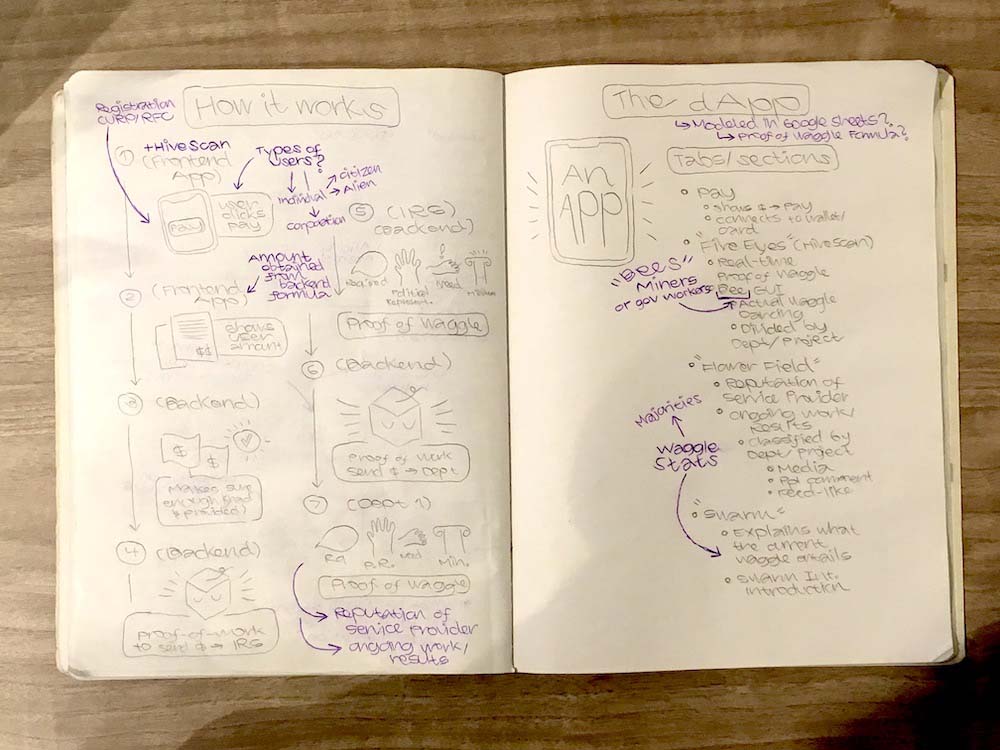
Levith’s process and workflow
Another guest speaker during the term was James Moreau, a staking ecosystem developer at Consensys, a company heavily focused on promoting Blockchain. James touched on many of the complexities of Blockchain and cryptocurrency, explaining them in a practical way that made sense to our students, while also fielding their questions and providing guidance on their own teacher-led module work.
For their project work, students concentrated on learning how to engage in e-commerce with cryptocurrency by first breeding their own “cryptokitties.” Cryptokitties is considered the first successful blockchain game, and was developed as a way to “build a bridge to Blockchain for everyday users.” Instead of amassing a cryptocurrency, participants collect crypto-collectibles. You can learn more about Cryptokitties in this excellent explainer video put together by participating student Thao N.
After their introduction to Blockchain through Cryptokitties, students began work on really diving into its concepts by choosing to create a cryptocurrency, a product pitch for a proposed Blockchain App, a Smart Contract (the program with which the Blockchain app would run) and a WhitePaper for the dApp.
Project Outcomes:
- Maria decided to tackle two topics at once: 1) most people have a misunderstanding of economic issues and 2) most game companies are greedy, spamming their “free” products with exclusive content. Their solution was to “create a multiplayer game owned and updated by the players where gamification is used not to make customers spend money, but to solve issues with the economic system.” In their project, the game is owned by the community and the community decides.
- Che and Scott also elected to develop a game that gamifies the backend of Blockchain to simplify and educate users on how blockchain really works. The game concept they developed is Metaminers, which aims to have users build a blockchain together with their friends. Users add to the chain by playing minigames, receiving rewards for completing entire blocks.Unlocking blocks leads to a chest containing rewardables that can be used to help solve problems easier in the future. As part of their process, Che and Scott spent quite a bit of time developing a wireframe of their product including graphics and other assets, examples of which you can see below. For their smart contract, they chose to mirror the inherent ethics held by founder(s) Satoshi Nakamoto in 2008 during the creation of Blockchain.
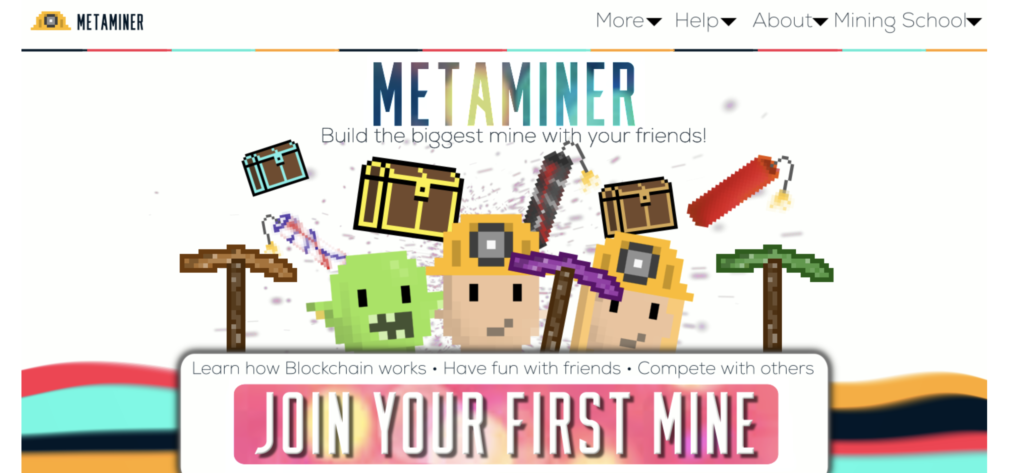
The Matrix
Driving Question: How can we document and portray the truth behind some of Panama’s hidden treasures?
This module, led by educators Emma Gleeson and Sophie Yang, offered students the opportunities to explore the “hidden gems/treasures” of Panamanian culture through experiential learning. For their project work, students were asked to split into groups and create a documentary representing a local cultural phenomenon through one of the following SPEED lenses: social, political, economic, environmental, or demographic.
The Matrix module allowed students to gain experience in every facet of documentary filmmaking, from the early planning stages like creating a shot list and developing storylines to editing the final product in programs like Final Cut Pro. Students were given autonomy over their documentary storyline, provided it related to one of the SPEED lenses. Since filmmaking and media are popular subjects among our students, the skills learned during this module will likely be built upon in future projects, including potential mastery projects.
During this module I learnt so many new skills that I know will be very useful to me in the future. I learnt how to use a stabilizer and regulate the exposure to get the perfect lighting and angle for the shots. During editing I learnt so many tips from chase that made the editing process so much easier and enjoyable. -Marwa, Class of 2020.
The class sessions focused on helping students understand non-fictional and non-linear storytelling, developing various media techniques, and learning from industry experts how to build interactive elements/loops into documentaries. All of these skills were necessary components for developing the final project.
The experiential learning portions of the class provided an opportunity for students to venture outside of the City of Knowledge and witness the sights and sounds of Panama and its varied inhabitants firsthand.
Casco Viejo
One excursion was to Casco Viejo, Panama City’s historic district, where students learned how various cultures blended over time, creating the heterogeneous society that exists today. It was one of many opportunities for students to experience the food, fashion, and music that is unique to the region. Module participants also learned about more contemporary issues faced by the country of Panama, including the immigration problems like unemployment and low wages resulting from people trying to cross over from South American countries like Colombia and Venezuela into Panama.
Biodiversity Museum
Students also visited Panama City’s Biodiversity Museum, a colorful structure designed by renowned architect Frank Gehry. They were able to gain an understanding of how important it is for the residents of Panama and its visitors to work alongside the organisms existing in Panama’s various ecosystems to thrive both economically and environmentally.
Emberá Community
Students also embarked on one or two excursions to Emberá Quera, home to Panama’s indigineous Emberá tribe. Known for their riverine lifestyle, the Emberá maintain a close relationship with nature. Module participant Cam N. noted the following examples during his time in the village:
- Though they’ve switched to concrete housing to protect against natural disasters, the Emberá have preserved their technique of making roofs out of local leaves
- They fastidiously protect their forest, utilizing space as not to cut down additional trees and caring for animals who are hurt
- Only buying urban products when necessary: the Emberá try to distance themselves as much as possible from urbanity, instead leveraging their natural environment for resources
- Only taking what they need: the Emberá draw fish from the river and fruit from the trees, but do their best to avoid harmful activities such as cutting down trees
Regarding his interactions with the Emberá tribe, Class of 2020 student Jack C. shared the following: “I am feeling much stronger in this subject area, after spending time with the Emberá tribe and doing the research necessary to create an accurate documentary on their community. I did my best to connect with the community members and understand their way of life as best as possible in order to make a powerful documentary.”
Project Outcomes
- Liam, Cam and Pabi created a poetic documentary conveying the definition of migration through analogies. To do so, they used Panamanian images and footage to illustrate this concept and divided the film into two sections: movement and stillness. Ultimately they conveyed that movement is inevitable and that everyone should learn to adapt to it.
- Estelle, Marwa and Isa created a documentary about the lives of the people displaced during the gentrification of Casco Viejo, Panama City’s historic district.
- Jack, Zheka and Mafer created an expository documentary about the Embera feminine Identity in the Emberá community that aims to expose different opinions on gender equality and the role of women in the village.
- Thomas created a poetic/linear style of documentary about Afro-Cotillion migration, telling the story through food and interviews with two chefs involved in the food culture of Panama.
I wanted to mix my documentary with a linear approach, because I wanted to have a storyline moving from neighborhood to neighborhood and showing interviews with people who are involved in the food scene in that area. -Thomas, Class of 2020.
Personal Projects at a Glance
Here is a look at some of the personal projects our students engaged in this term, many of which are still works in progress.
Mystery of Molas by Zheka, Isa and Thao
Molas are hand-made textiles, an art form of Kuna people in Panama. There are a lot of unique worldviews and stories involved in this artform, which many people are not aware of. We aim to partly uncover the “mysteries” of molas through our booklet.
Faces of a City by Eng
For her personal project, Eng is experimenting with different art styles and exploring the theme of people in cities and the different layers of human nature. She seeks to answer the following driving question: How can I create an art portfolio that best showcases my skills and my growth in making art?
Painting a World by Eng
In Painting a World, Eng wants to create an animated short film that is fully hand-drawn in virtual reality. The film’s purpose is to convey the message of staying true to yourself when faced with a hard decision that challenges your core values. Eng aims to portray this story because we are living in a world where you can be easily drowned in the sea of societal expectations and forget the things that truly matter to you.
The Idea of Mother Nature by Grace-Ann
This project is about personifying the idea of Mother Nature in all her different forms. Grace-Ann used her fellow peers and created an entire look for each person, predominantly makeup, that could represent Mother Nature. This personal project is in progress and will incorporate writing elements (such as poetry) with more looks to come. It will eventually be a book or a lookbook of all the photos and writing pieces.
Hydroponics and Their Importance by Aurelia
Aurelia’s mastery project focuses on the importance of sustainable food. To communicate this importance, she is making a science kit along with an advertising campaign for people aged 12+. The science kit will enable people to grow food at home, while the advertising campaign is meant to spread the message.
Current Term
We hope that everyone is doing their best to stay safe during the COVID-19 outbreak. Due to the pandemic, like most students around the world, our CM2 students have switched to online learning for the foreseeable future, selecting from one of two project-based learning modules. The first, RobOlympics, explores the concepts of robotics and physics by having students answer the following driving question: How can we build a robot that meets a multitude of challenges? The second module, Gods, Gold & Genius, is a chance to dive into the subjects of philosophy, anthropology, and creative writing by answering the driving question, “How can I use fictional/non-fictional storytelling to create a meaningful experience about Greek society (ancient/ contemporary)?” Students are also participating in a fitness-based online module led by Educator Dan Garvey, where they seek to answer the driving question “How can I stay physically healthy with limited resources?” and focusing on service learning and personal wellness through other modules.
